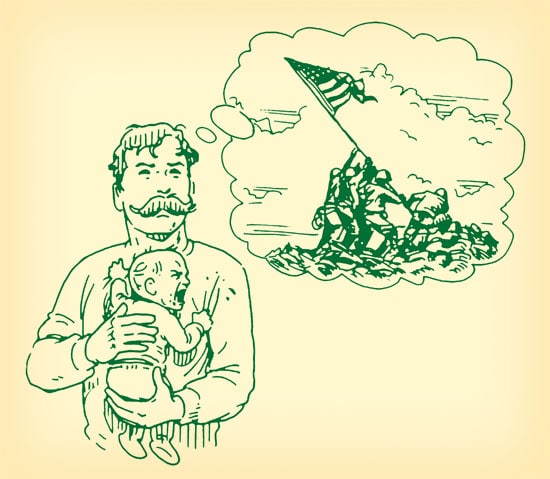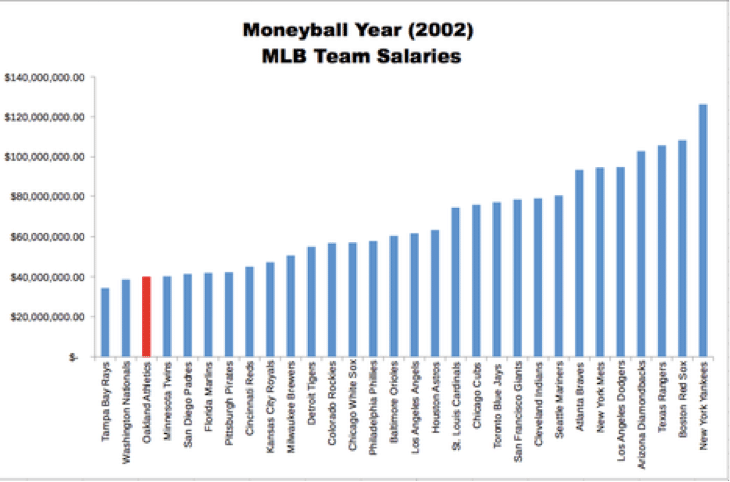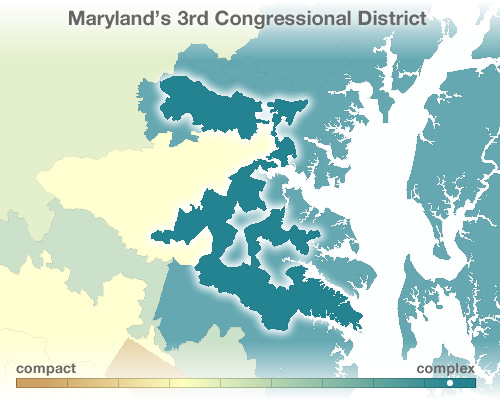
Yesterday we talked about the “skillset” needed by new dads. Things like changing a diaper and burping a baby will come pretty easily with practice. Keeping a positive mindset is harder, and much more important. Here are my suggestions for maintaining a healthy perspective and preserving your sanity after a baby bomb drops from the sky and blows up your old life.
New Dad Survival Guide: The Mindset
Realize you were made to do this. There’s a popular perception that being an involved dad is an entirely modern phenomenon — and that primitive men just deposited their seed and went on their way. But recent research on the neurological and physiological changes men experience before their baby arrives shows that male parental involvement is in fact deeply ingrained.
Three weeks before your baby is born, your testosterone levels will fall by about a third in preparation for you taking on a more nurturing role. (They’ll rise back to pre-birth levels about six weeks after your baby arrives.) At the same time, your brain will actually change too – becoming more adept at homing on a baby’s cries. As the researcher who discovered dads’ drop in T put it: “Raising human offspring is such an effort that it is cooperative by necessity, and our study shows that human fathers are biologically wired to help with the job.”
Contrary to the popular cultural stereotype of the bumbling dad who has to constantly be rescued by Mom, men can be just as competent at childcare as women.
Realize there’s no “normal” way to feel. People love the image of the man — especially one who’s typically tough and stoic – who cries upon first seeing his progeny. And guys will often talk about the overwhelming love they felt for their newborn as soon as it emerged from the womb. And if that happens to you, great. But realize there’s a whole host of different emotional reactions you might experience. I didn’t cry when either of my kids were born. I was just like, “Whoa, cool, there’s my baby!” I did feel a surge of love and pride when I first held them, but you might not even feel that. Instead your baby might seem like a weird stranger — a tiny alien that suddenly beamed down into your life. That’s okay too.
The feelings you have for your baby can be compared to a romantic marriage versus an arranged marriage. In the former, you fall in love first, and then make a commitment; in the latter, you make the commitment, and then fall in love. Both kinds can and do work just fine. So don’t worry about or think something is wrong with you if you don’t feel over the moon about your kid right off the bat – as you involve yourself in his life, your love for him will grow deeper and deeper with time.
It’s also very normal to have fluctuating feelings about your child after you take her home and as she grows up. I feel like there’s this idea out there that you’re going to love your child intensely every moment of every day. That’s decidedly not the case. You’ll always have a steady, unchanging love for them, but sometimes you’ll feel incredibly angry at them or just plain ambivalent. You’ll even have moments where you don’t really like them. Your love for your kid is like a little ember that’s always there, and sometimes explodes into a fire of overwhelming joy and pride, and sometimes smolders very faintly. All very normal.
Get hands-on right away. If you’re feeling awkward or unsure about being a dad, the best thing you can do is to ignore that feeling and spend as much time with your baby as you can. If you heed that awkward feeling and avoid the kid, it turns into a cycle where you feel more awkward so you avoid him more, making you feel more awkward, and so on. On the other hand, the more hands-on you get, the more comfortable and bonded you feel with the baby, and the more time you want to spend with him, and that becomes a virtuous cycle that keeps on increasing your confidence.
Be empathetic. A crying baby can be incredibly frustrating. One of the things that helped me stay calm was trying to put myself in my baby’s tiny, tiny shoes. I would think about the fact that these were their very first moments, days, and weeks on this planet, and that every single sight, sound, and smell was brand new. There’s plenty for a baby to be disoriented and upset by.
Even more importantly, I’d think about the fact that when something was bothering them, they had no other way to let us know except crying. Imagine if you felt sick or had an itch or had something scratching you, and you couldn’t do anything about it or ask anybody for help. It’s hard out there for a baby.
Realize they only get more and more interesting. Ernest Hemingway once said, “To be a successful father . . . there’s one absolute rule: when you have a kid, don’t look at it for the first two years.” Now I don’t endorse Papa’s tip, but it is true that while many women love babies, men generally enjoy their children more as they get older. Babies are cute, and sometimes I even have those moments where I wish I could keep them that little forever, but let’s be honest, they’re kind of boring. They’re these cute, but super stoic, unsmiling creatures who only sleep, eat, and poop.
But the good news is that they steadily get more interesting by the week. It’s amazing to watch them gain a personality and begin interacting with you bit by bit. The more they’re able to engage with you, the more enjoyable they become. (On the downside, the more they’re awake, able to control their body, and verbalize, the wider their arsenal of exasperating antics!).
Manage your expectations. Anger and unhappiness of all kinds generally have one root: a mismatch between expectations and reality. The more you think fathering is going to revolve around happily tending to a calm, smiling baby, the more frustrated you’re going to be every time she starts hollering. The more you set your mind that it’s going to be tough, the more you’ll be able to calmly roll with the punches.
This is especially important when it comes to their sleep schedule. Once they start sleeping through the night, it’s tempting to think, “Whew, this is great. Now things can get back to normal!” All goes well for a few months…then they wake up in the middle of the night because they’re teething or sick or who knows why. If you’re not prepared for this to happen, it can really bum you out. Count on it, and you’ll find it easier to deal. Don’t worry, they’ll get back on track again. (But don’t count on it!)
Embrace the challenge. I’d recommend going even further than the recommendation in the point above; rather than just accepting that it’s going to be hard, relish that fact a little. There are so few challenges in our modern life, that I really enjoyed and appreciated getting to weather this one. The more you see fatherhood as a challenge that will test your mettle and give you a chance to rise to the occasion, the easier it will be to maintain a positive mindset, and the more satisfying the experience will be.

We’re you’re feeling tired and rundown, it helps to keeps things in perspective. Being a new dad is hard, but it’s not say, Iwo Jima hard.
Keep it all in perspective. While it’s good to expect the worst, also realize that in the grand scheme of things, it’s really not that hard. There will definitely be times when you’re going to feel super tired and rundown from the late nights. To keep myself from sinking into despondency at such moments, I would think something like, “Well, at least I’m not tired from trying to stay awake in a freezing cold trench at the Battle of the Bulge….Right, this isn’t so bad. I can do this.”
Embrace this season of your life. When it comes to minimizing your frustration and maximizing your happiness with fatherhood, I cannot emphasize this point enough. It’s completely normal to have moments where you miss your childless life after you have a baby. But the more you concentrate on what you can’t do during this season of your life, instead of what you can do, the more unsatisfied and restless you will feel. Sure, you can’t go out with your friends as much, and doing pretty much anything involves a lot of rigmarole, but, you get to watch a human being’s development moment by moment and play a role in shaping that development. You’re holding a living legacy in your arms. That’s pretty awesome.
Realize that your kid is not going to “make” you happy. Studies showing that having a kid decreases your happiness get passed around a lot these days, but other research has in fact shown the opposite, and the results are actually inconclusive. If you’re worried about how your new baby is going to affect your happiness, keep two things in mind.
First, happiness is overrated. I realize this is a loaded statement that requires a lot more unpacking than I have room for in this post, but suffice it to say that your moment-to-moment feeling of well-being is much less important than your overall sense of satisfaction and fulfillment. If you asked a man who was in the middle of climbing Everest – a man in the midst of an incredibly painful and strenuous challenge — whether he felt “happy,” the answer would probably be no. But despite the pain, the climb is probably bringing him a deep satisfaction, and for the rest of his life, he will experience the fulfillment of being able to say, “I climbed that mountain.” Such is parenting.
Second, happiness is a choice, not something compelled by circumstances or your children. Blogger and dad Matt Walsh recently penned a brilliant piece on this truism. The whole thing is worth reading, but here’s a choice excerpt:
“My kids don’t make my happiness. That isn’t their job. My happiness isn’t a responsibility that falls on their tiny little shoulders. Kids come into this world helpless, naked, and needing, yet so many of us immediately shove them into the Happiness Factory and bark commands. “Get on the assembly line and build me some happiness! Quick! Do your duty, sir!” …
The joy and happiness of parenting is like the joy and happiness that can be found in many good things: it comes from sacrifice, self-denial, and self-giving. It comes with work and effort. I have to be the sort of person who finds happiness in giving, and I will not automatically be that sort of person just because I had sex and made a couple of babies. In other words, my kids don’t make me happy to be a parent; I have to make me happy to be a parent. And I am. I am beyond words. But that happiness will decrease if I become more selfish, and it will increase if I become less selfish. If you want your kids to make you happy, you are asking your kids to make you less selfish. That is a demand that is, all at once, incredibly stupid, laughably absurd, and profoundly abusive.
And then maybe we should stop worrying so much about this happiness thing, anyway. I think the happiest people are the ones who spend the least amount of time whining about their desire to be made happy. They do a thing because it’s right, or because they have a duty to do it, or because it is interesting, or beautiful, or enlightening. They choose to find happiness amidst it all, but that was never the point. They aim beyond mere enjoyment, pleasure and satisfaction. If your own happiness is the Alpha and Omega of your life, you’ll never do anything important or become anything significant in this world. Ironically, you’ll also never be happy.”
Keep doing the things you love. While trying to replicate your childless life once you have a kid is a recipe for frustration and poor parenting, you shouldn’t entirely give up the things you once loved either. Have a couple non-negotiables that you make it a priority to keep up, at least after the craziness of the first few months subsides.
Last month when I was rock climbing I saw a couple who brought along their 2-month-old and were happy as can be. I felt like shaking their hands.
Fitness has been something I’ve taken a lot more seriously this year, and I was back going to the gym every day two weeks after Scout arrived. I was super tired from the late nights, but it’s something I love to do and hate to miss. It helped buoy my sense of well-being, and it gave me a small sense of routine when the rest of my life was a little chaotic.
Isolating yourself in your house with just your baby and your wife and a cabinet full of junk food is not going make you feel good about life or fatherhood.
Keep up your relationship with your significant other. Speaking of holding on to the things you love, don’t let your relationship with your wife/girlfriend go to pot either. Your energies will definitely turn away from each other and towards taking care of the new arrival, and you won’t have much time to just hang out and enjoy each other’s company. And because much of your willpower will be depleted in restraining yourself from throwing the baby out the window, you’ll have less of it for controlling your behavior towards each other. You may find yourselves bickering more and being more prone to losing your patience with each other.
So it’s important to empathize with your partner’s state of willpower depletion, be more tolerant of their foibles, and carve out time — however short — to re-connect each day. If you work and your wife stays home, take the baby off her hands as soon as you come in the door. Watch some TV and do some cuddling and talking when the baby sleeps at night. Remind yourselves to stop and hug. Once her doctor gives her the greenlight after six weeks to resume sex, try to fit that activity in when you can. After a couple months, find a babysitter and have a date night.
The best possible thing you can do for your kid is to have a good relationship with his mother. Don’t neglect it.
This too, shall pass. Adopt this as your motto during this time. When you’re in the trough of the newborn phase, it can feel like the tiredness and stress are going to last forever. But of course it doesn’t.
A child demolishes the old structure of your life — the one that revolved around you — and it takes some time to build a new structure in its place – one that revolves around your child. Until the new structure is complete, life can feel a little shaky.
For my money, the lowest time is around the 6-7 week mark. You’ve had a month and a half of greatly disrupted sleep, the rush of having a newborn that kept you going the first few weeks has evaporated, and while the baby requires a ton of care, she isn’t giving much in return, unless you count blank stares and dirty diapers. You really have to run on duty and commitment rather than pure affection during that time.
But then things turn a corner. With any luck, your baby will start sleeping through the night around 8 weeks. Once you start consistently getting a full night sleep, you can handle any fussiness that arises during the day. She’ll start smiling around the same time too, and the first little hints of personality will emerge.
Around 6 months, the new structure of your life will have tenuously been erected. You feel much more confident and less awkward. Being a dad starts to feel like your new normal.
A year out, you feel like a pro, and being a dad is your new normal. As more and more months go by, you, your wife, and your son or daughter find a really happy groove and routine.
But by that time of course, it’s time to have another baby, throwing everything back into chaos! But next time around, you’ll be a seasoned veteran.
Best of luck to you on this incredible journey.
No related posts.










































